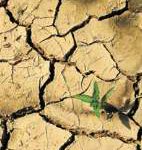The grasslands of the Tibetan Plateau are steadily degrading, a phenomenon that the Chinese government blames on the cattle and sheep kept by local herders. From 2003, many of the herders in the area known as the Three Rivers Source, from which the Yangtze River, Yellow River and Mekong (Lancang) River originate, have been moved to the outskirts of urban areas in order to give the grasslands some respite. I found, however, that a failure to effectively replace herders’ livelihoods has led to a drop in their living standards.
The 631 million yuan (US$92 million) resettlement project aims to resettle 89,358 people in more than 10 counties, cities and autonomous prefectures of Qinghai province. To date, almost 60,000 people in 10,000 households have been moved from their homes to the outskirts of county seats, where the authorities provide housing and living subsidies.
The county of Zhiduo is known as the “first county on the Yangtze” and is home to the famous Hoh Xil, or Kekexili Nature Reserve. The village of Suojia, in Zhiduo, covers 8,000 square kilometres. It is an important habitat for wildlife including the Tibetan antelope and it is the source of the Tongtian River, a tributary of the Yangtze River. Since 2005, as part of the ecological resettlement program, herders have been moved from Suojia to the outskirts of the county town, forming a “migrant village” of almost 200 households.
The county town itself is not large, but there is a short distance between the migrants and the town proper, leading to a psychological gap between the two populations.
“Zhaduo” (a contraction of the Tibetan name Tashi Dorje), the deputy secretary-general of the Qinghai Three Rivers Ecological Protection Association, was once an assistant to Sonam Dargyi, a hero in the fight to save the Tibetan antelope who in 2006 received a posthumous CCTV award for his work, after he was murdered by poachers in 1994.
Zhaduo knows the new arrivals well. If they are not relatives, they are his friends. I accompanied him on visits to many of the migrants’ homes. The government has provided each family with an identical house with a newly dug well in the yard and a stove in the centre of the house. This is the sum total of household goods the government has provided. Each household receives an annual subsidy of 6,000 yuan ($877) and an extra 1,000 yuan ($146) for fuel. These subsidies will be provided for 10 years, after which the migrants are free to return to their homes, if they wish.
The Kunlun Ethnic Culture Village, on the southern outskirts of Ge’ermu, is mainly occupied by ecological migrants from Qumalai county, where the Yellow River has its source. In Kunlun, 240 households have been settled; like those in Zhiduo, the migrants live outside the town proper. Their children can attend school in the town and they can use the local hospitals, but they are still regarded as “incomers” and are officially under the administration of their original county government.
Tsering Lobsang used to be a village head in Qumalai county. In 2005, like many other villagers, he was happy to hear about the relocation. Life in the city was bound to be better, he thought. But things were not as easy as he had hoped. “Here you’ve got to buy everything, but on the pastures we already had everything we needed: we got it all from the animals. We burned dung for fuel there, but here we’ve got to pay for coal or gas. There we got water from the river, here it is piped and it’s only on for an hour a day. At home we can go to the toilet anywhere, there’s no danger of pollution. Here we’ve got a flushing toilet, but that’s no use without water.”
Tsering Lobsang is worried about the future: “After we arrived here, we sold off our livestock. Our houses were knocked down and the pastures were handed over to the state. But now we are here we can’t find work. Lots of people are just sitting at home all day.”
The new arrivals stand out in Ge’ermu, which did not have many Tibetan residents previously. According to the plan, the village was to build a range of public facilities, but the majority of them have not appeared. A rubbish collection point was built in 2006, but its contents were never taken away. It quickly filled up and started to stink. In the end, the village had no option but to dig a hole on some empty ground and use it as a dump.
The authorities of Qumalai, Zhiduo and Ge’ermu always hoped to provide jobs. The government has on occasion dispatched study groups to find solutions, but a lack of resources and technology has prevented any breakthrough. The migrants often feel they have been discarded.
A cadre from Qumalai said that the herders living on the outskirts of cities are themselves a “tourism resource”: attractions based around their horses, ethnic dances and traditional tents could be developed. This was the idea behind Kunlun Ethnic Culture Village, where some of the migrants put up tents, with the young folk employed in service and entertainment jobs. But visitor numbers have been low.
In the migrant villages there is a small shop every few paces. This does not need any technology to set up, but business is slow and they are unlikely to survive. Some of the villagers have given up and gone home to work as herders for people who were allowed to stay on the pastures, which brings in a small income.
The residents of Kunlun started a stone-carving workshop in order to sell carvings to tourists. But visitor numbers were low and those who did come were not keen on carrying a heavy piece of stone home, so few were sold. Now a clothing factory is planned, but without funds it is unlikely to get off the ground.
Zhaduo is even more worried than the others: he doesn’t know if the villagers will be able to integrate into town life, or if they will be able to get used to their original lifestyles if they move back in 10 years time.
He says that traditional Tibetan lifestyles are very environmentally friendly, especially because of Tibetan religious traditions. Tibetan Buddhism advocates respect for life and nature, and teachings about sacred mountains and holy lakes match well with current environmental concepts. It is very easy to use these traditions and religious teachings to urge local herders to fight against environmentally damaging behaviour. A partnership between the Qinghai Three Rivers Ecological Protection Association and Conservation International proved the efficacy of this method.
“If the locals can realise environmental protection and sustainable development without relocating, would there be any need to move them?” asks Zhaduo. Perhaps this could be a new solution.
Backgrounder: the Three Rivers Source
The “Three Rivers Source” refers to the sources of the Yangtze River, Yellow River and Mekong, or Lancang River, located on the Tibetan Plateau in western China, in southern Qinghai province. The area covers 302,500 square kilometres and has a current population of 556,000, 90% of whom are Tibetan. There are also Han, Hui, Salar and Mongol residents.
Historically this was an area of alpine meadows dotted with lakes, home to wild plants and animals. In recent decades glaciers and snow on the mountains have receded. Lakes and wetlands are shrinking; the land is drying up and becoming desert. Soil and water is being lost from a wider area. Desertification and degradation of grasslands is worsening. Forests have been damaged and 20% of local species are endangered. In some areas it is hard for locals to survive and they have no choice but to move.
Feng Yongfeng is a science reporter for Guangming Daily



